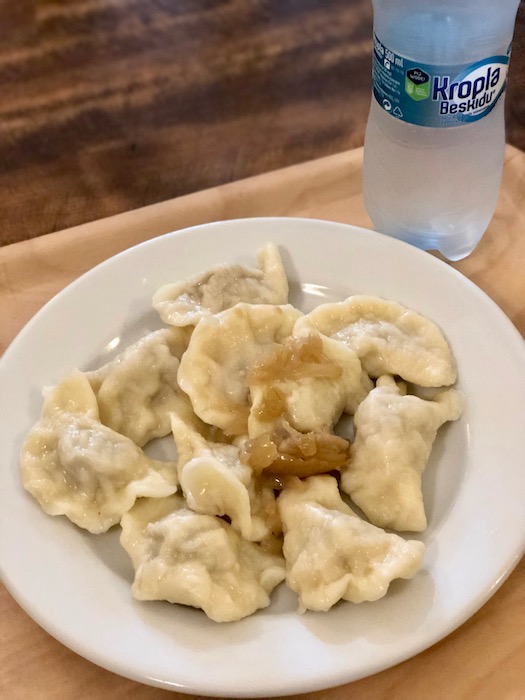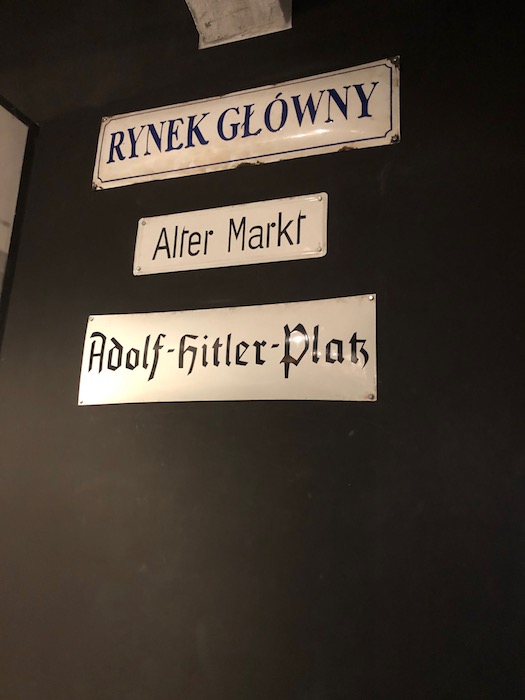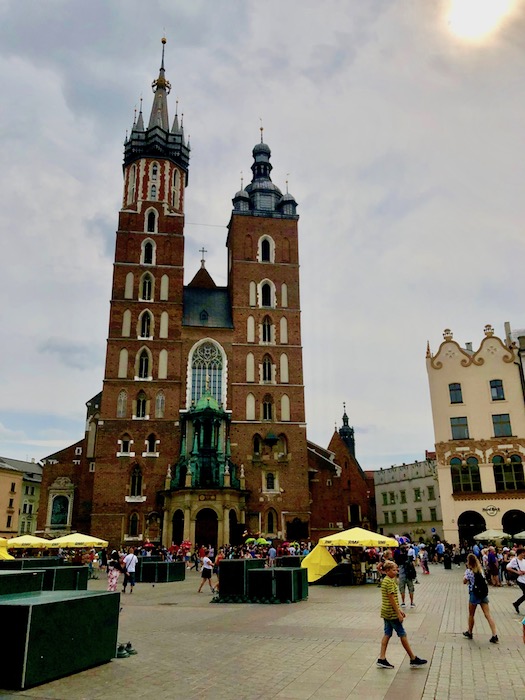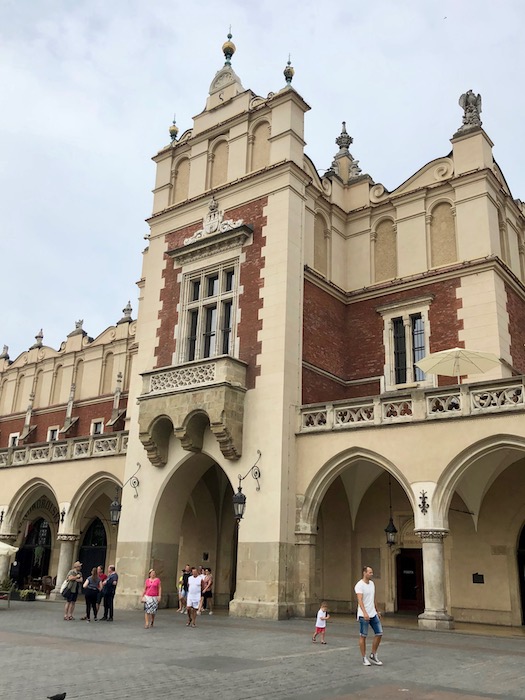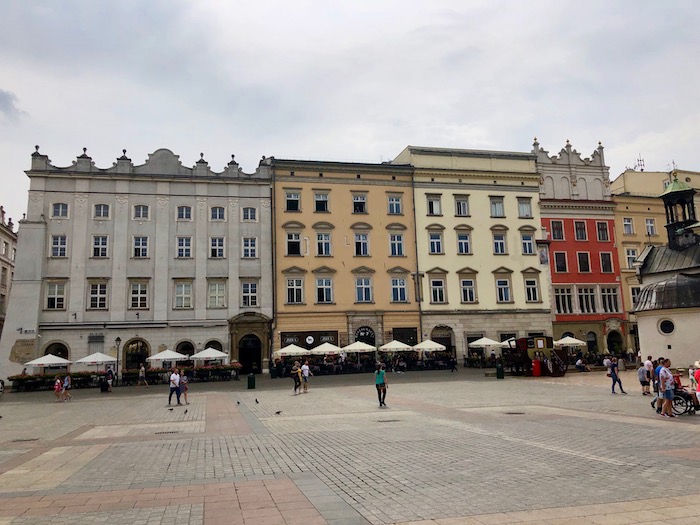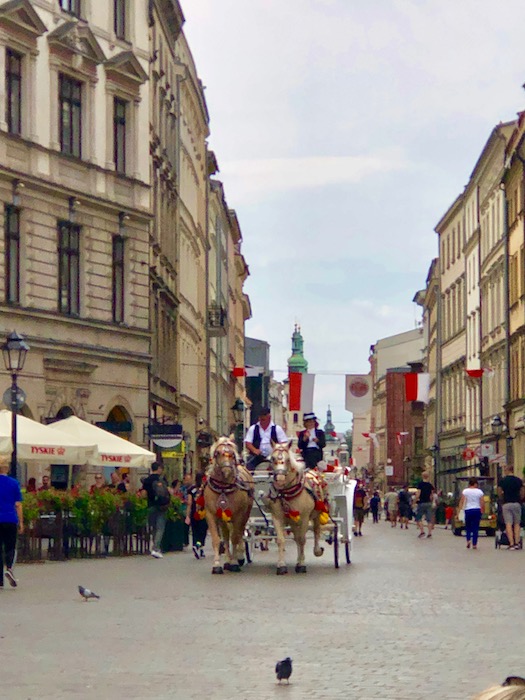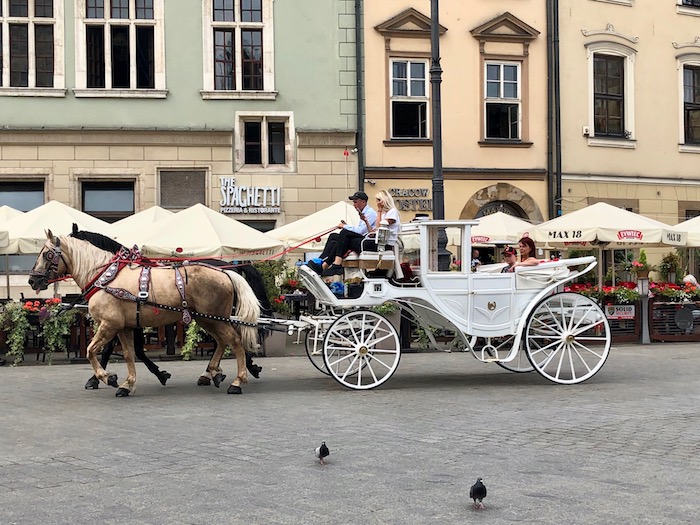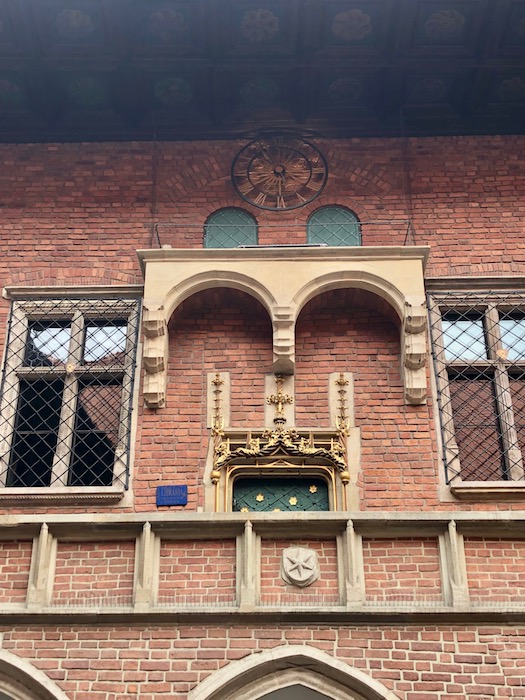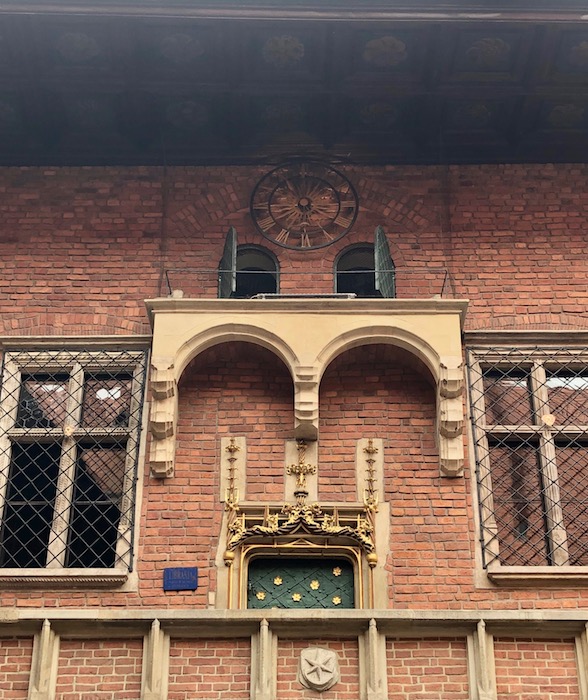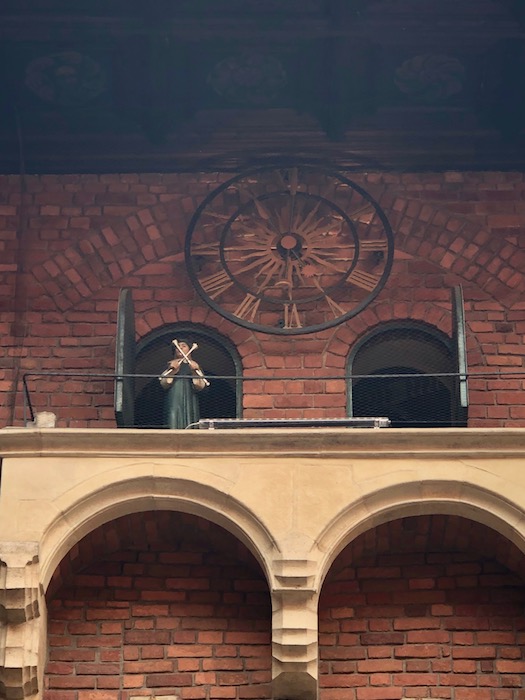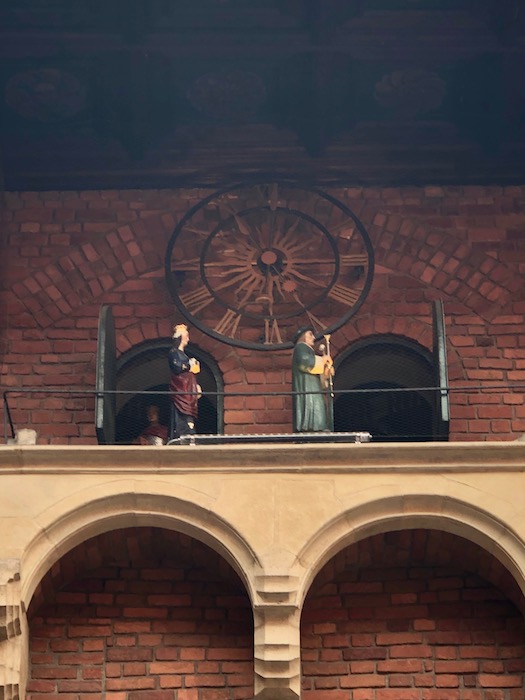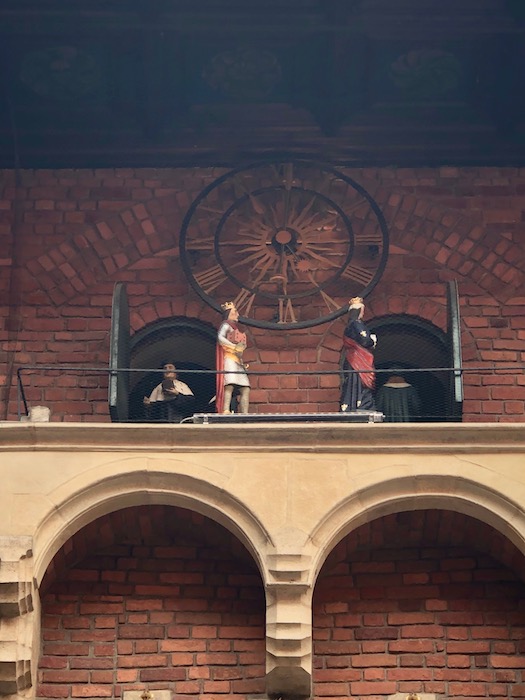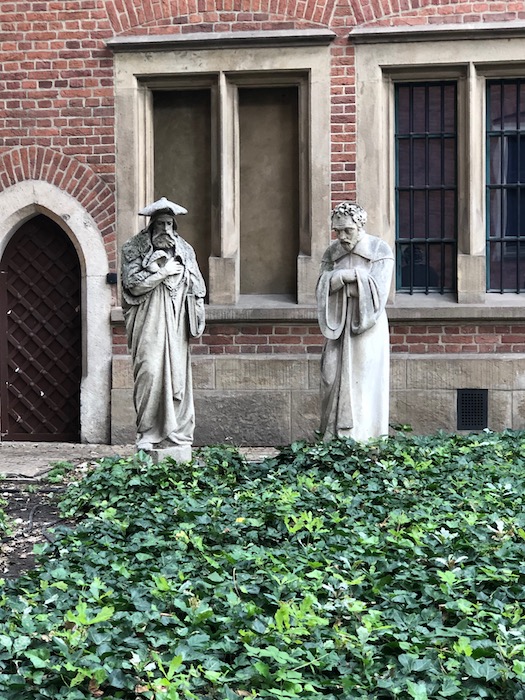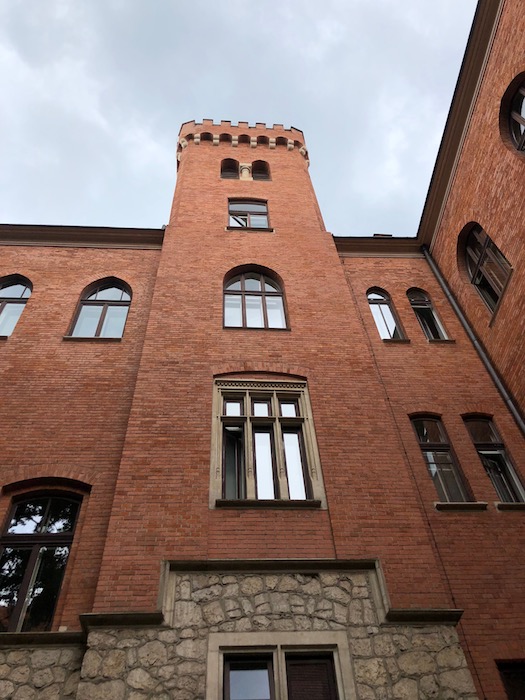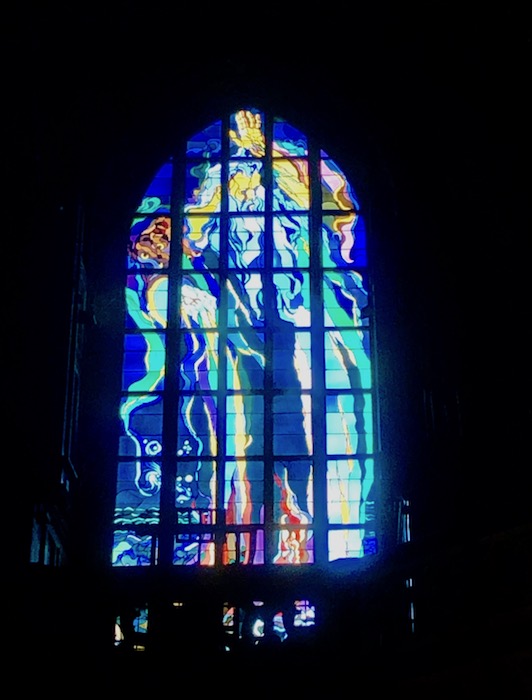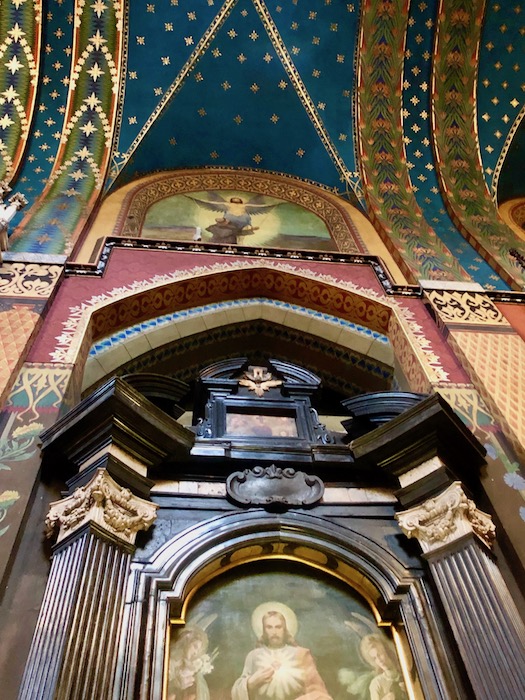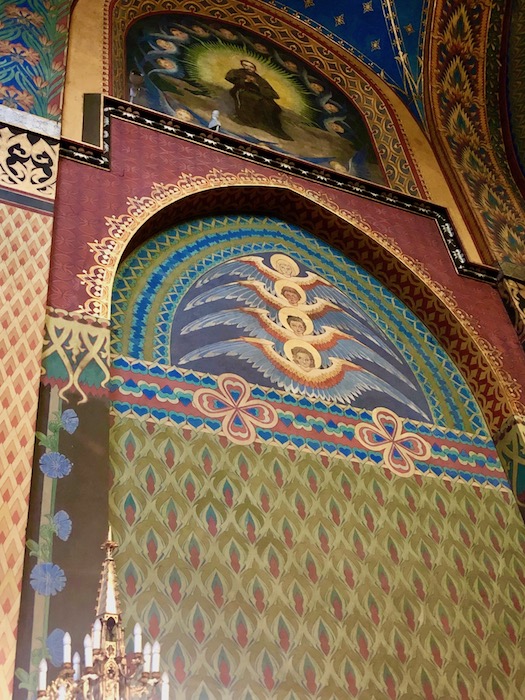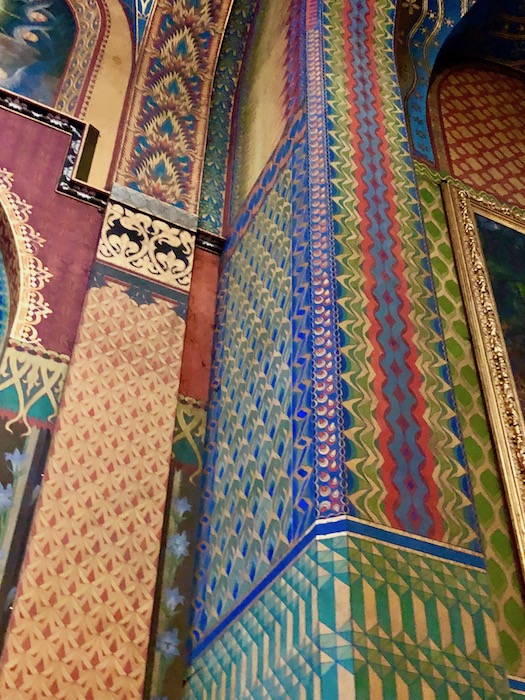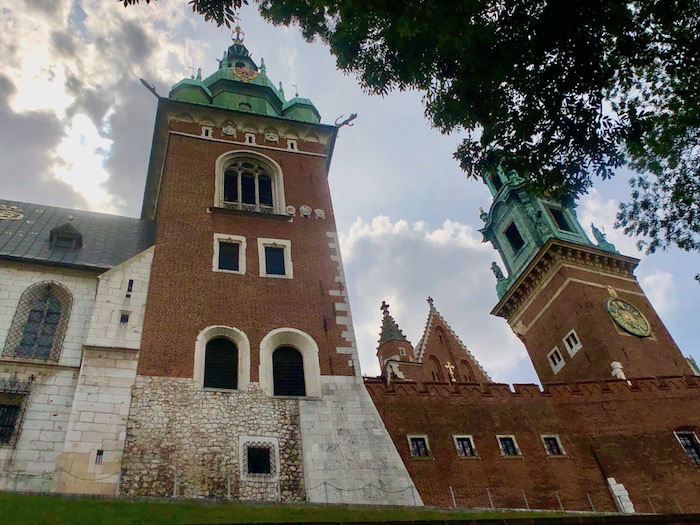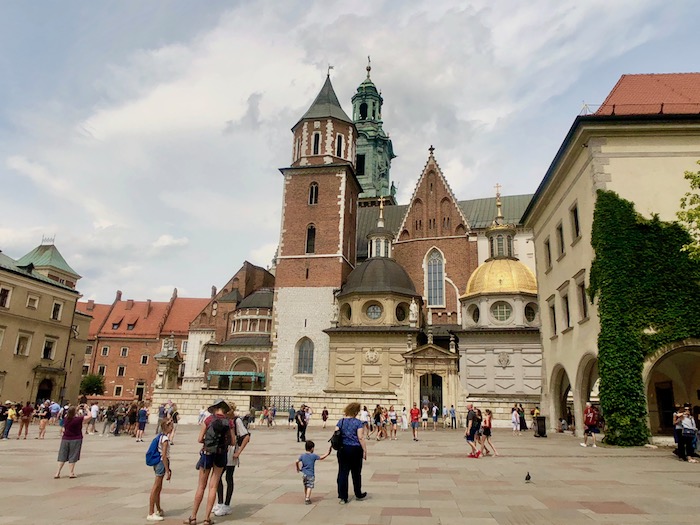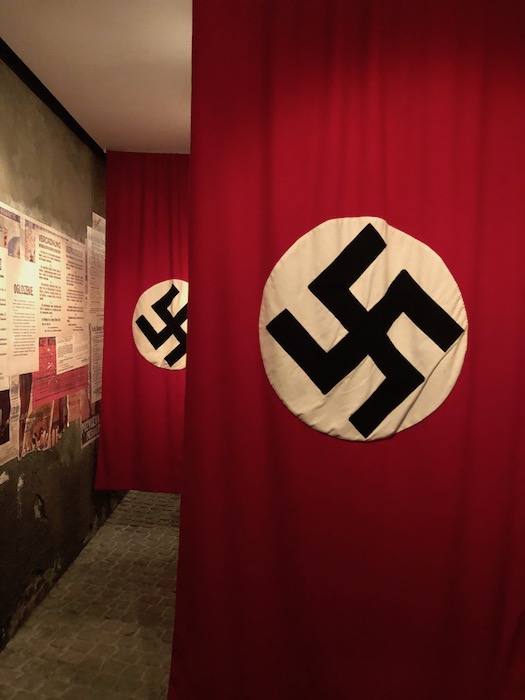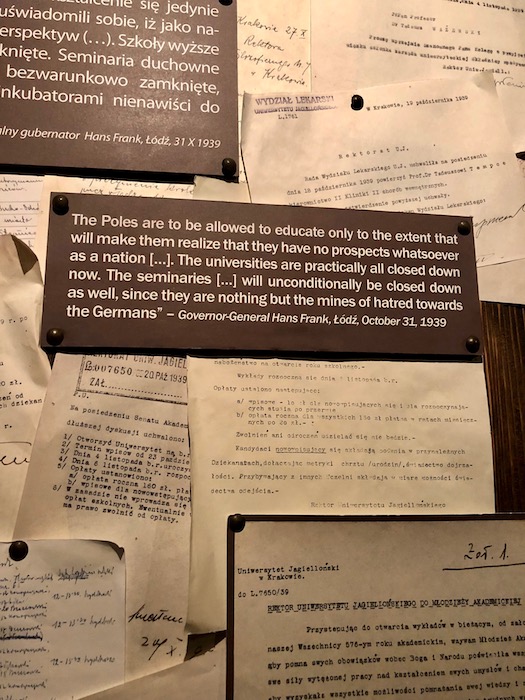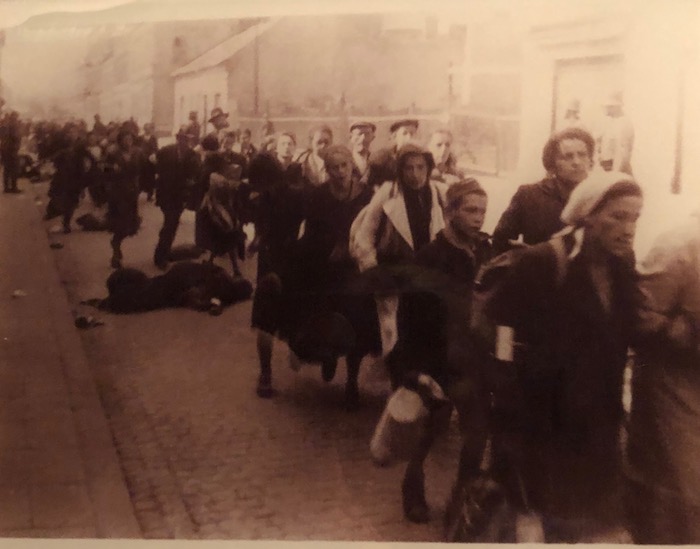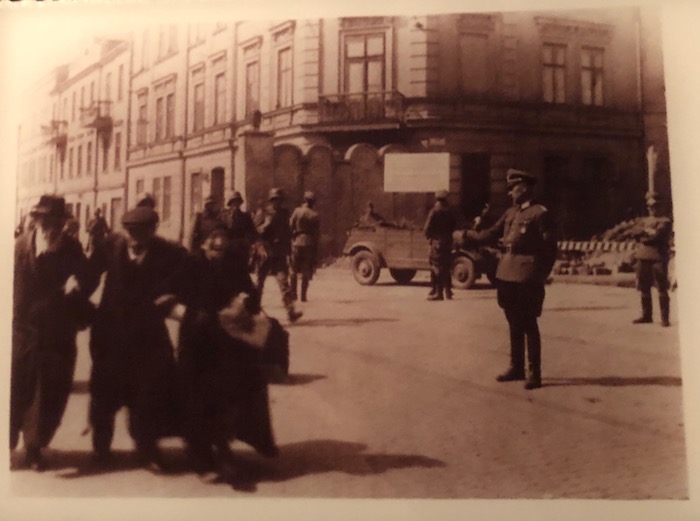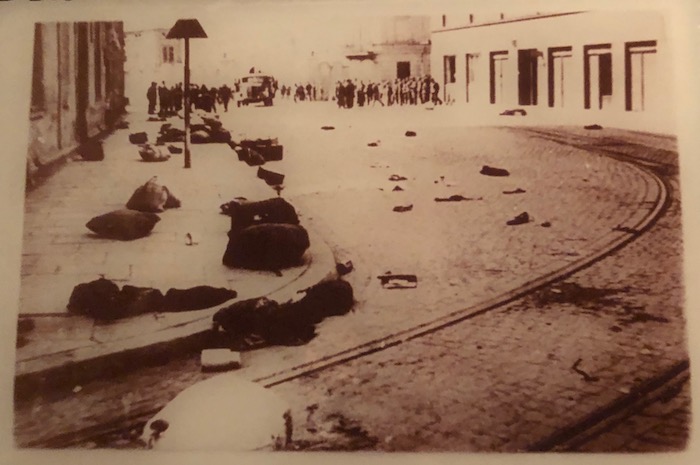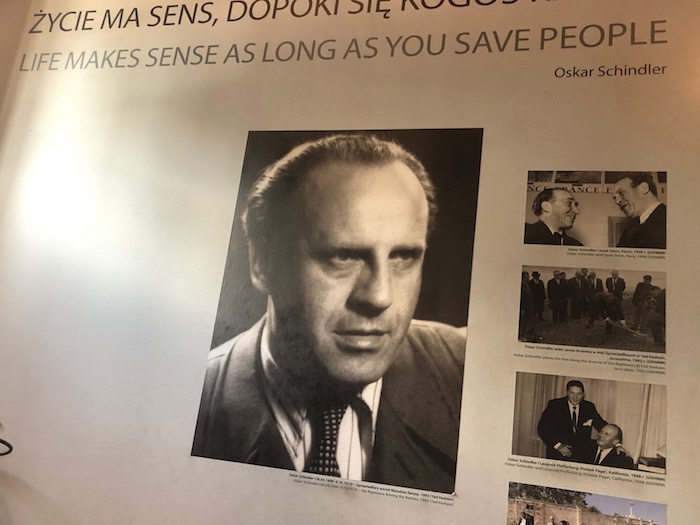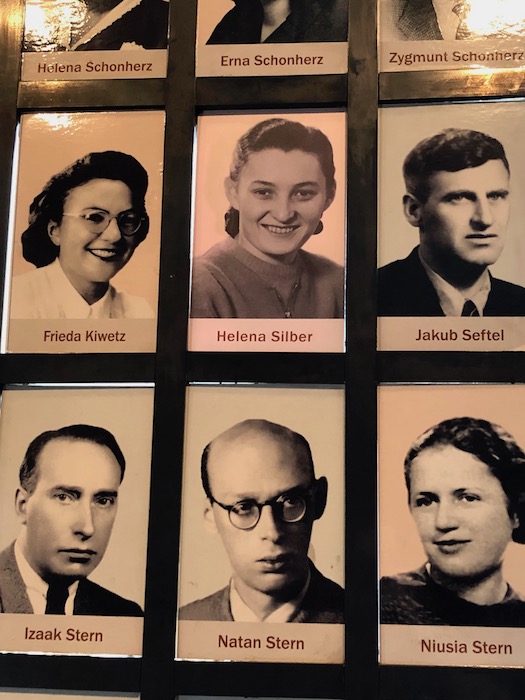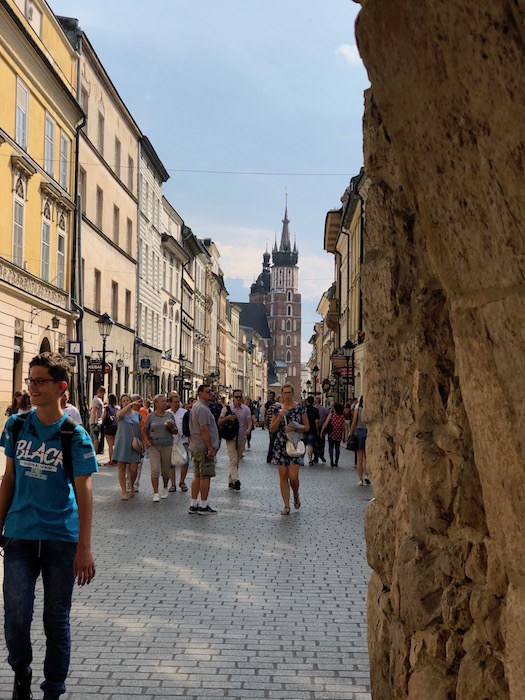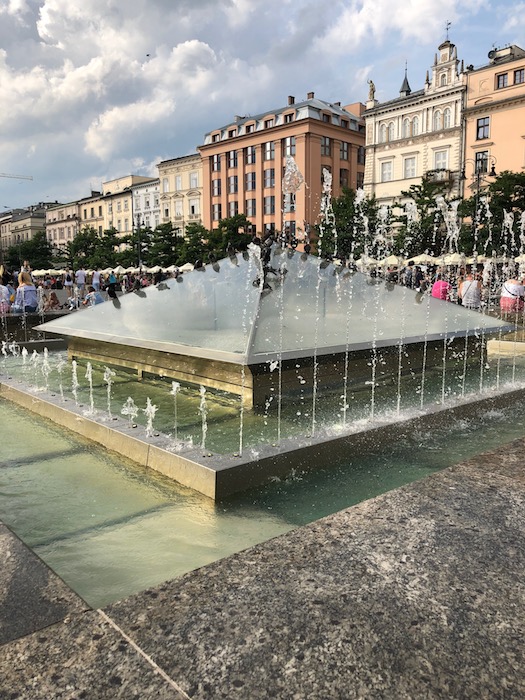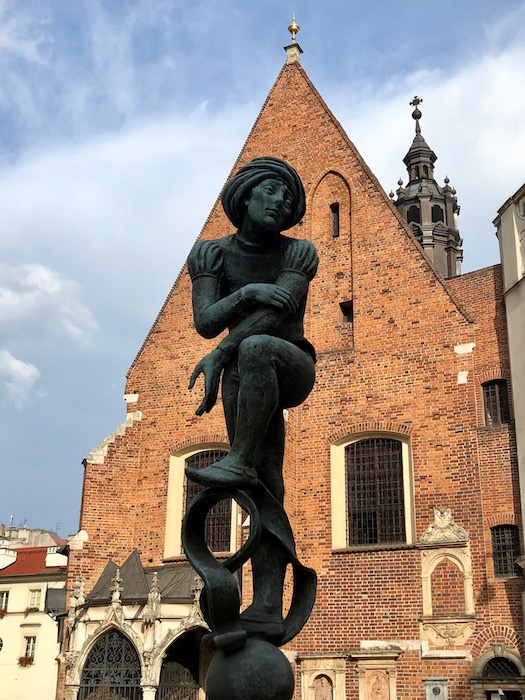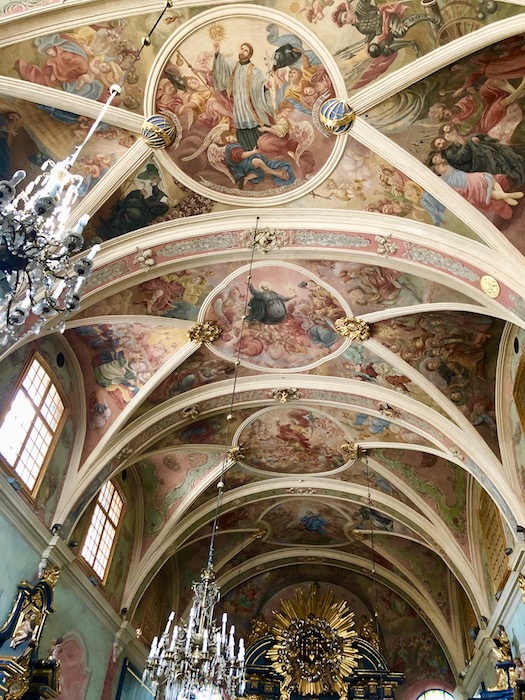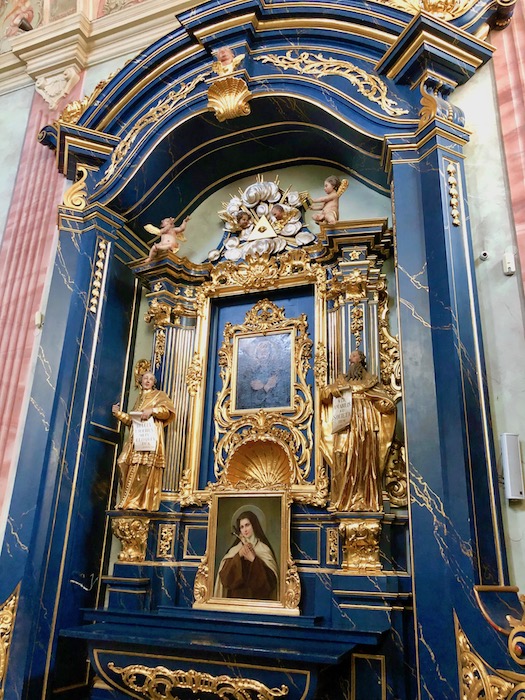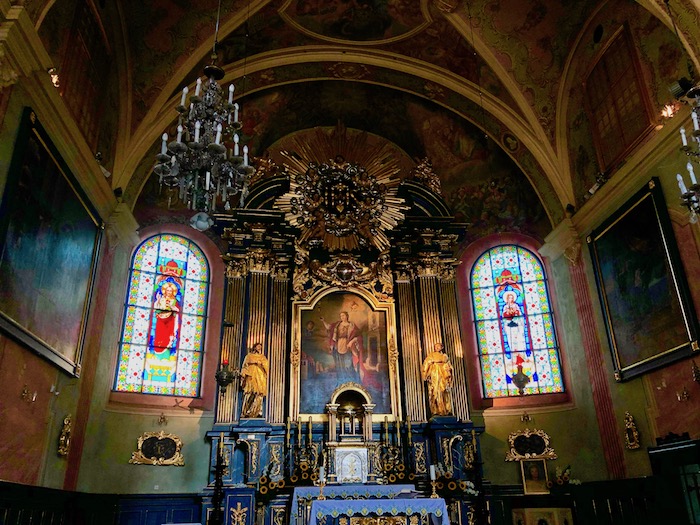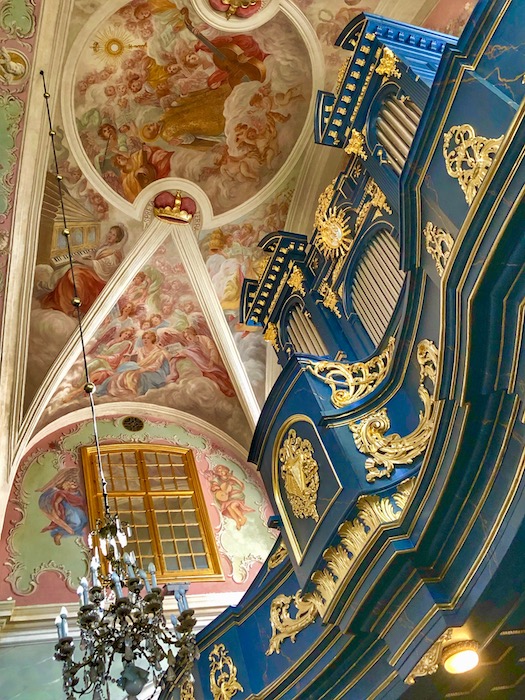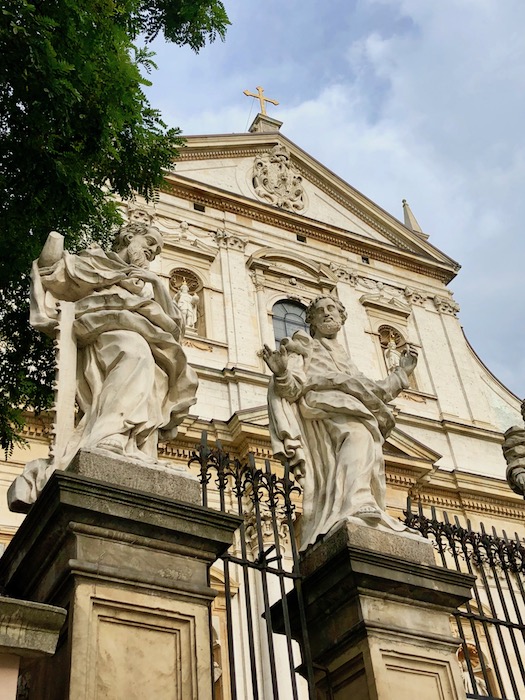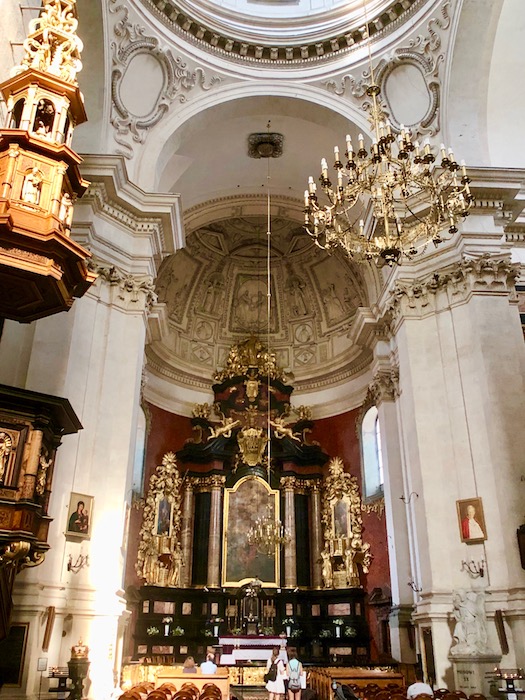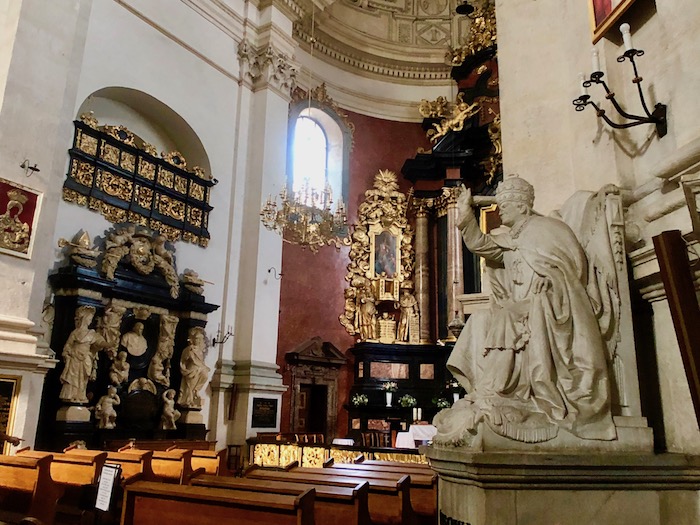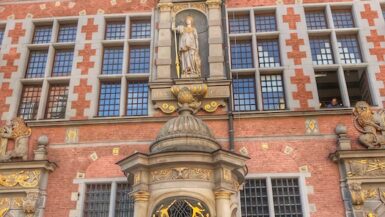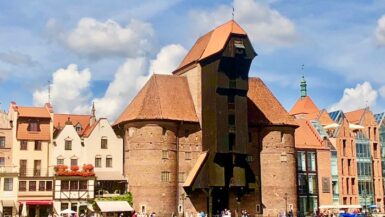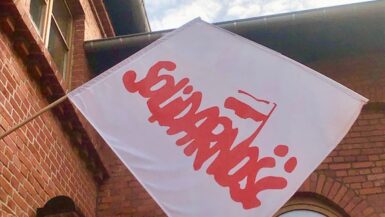August 7, 2019
Another day, another Walkative free tour (or two) – the guide for the tour of Old Krakow was Damian. He was kind of a goofy guy, but fun and full of knowledge. As a way to remember when Poland was established, he told us to think of the number associated with the devil (666 – a riff off his name I supposed), turn the first number upside down, and voila – 966. I will probably never forget it.
We started the tour at St. Florian’s gate. St. Florian is the patron saint of Krakow. His likeness is emblazoned on the interior of the gate (and possibly the exterior, I forgot to look) and is shown with a bucket of water purportedly saving the city. The problem is, Krakow has been destroyed by fire 20 times, so I don’t think St. Florian has been too helpful.

Krakow’s city center was not destroyed in WWII. Since many of the first settlers were German, Hitler believed that Krakow was fundamentally a German city and should be returned to the Germans intact.
From St. Florian’s Gate, we walked to Market Square, which is the largest medieval market square in Europe. Established as a place of trade, it was where wares from all over the world were bought and sold.
Executions were also held in the market square, the last of which occurred in 1794. If you were caught stealing, your ear was cut off. If you were caught a second time, your hand was cut off. If you were caught a third time, the market square was your final destination. Symbols reminding people of the penalties of thievery can be found in some of the building eaves.
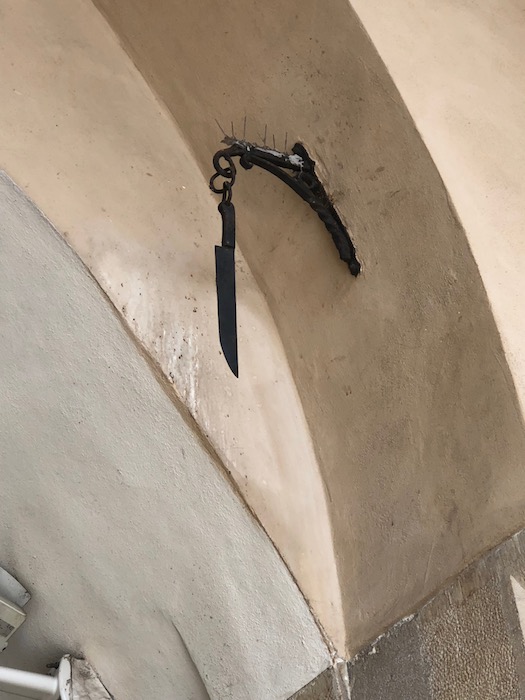
Just off the market square is the oldest university in Poland, Jagiellonian University, established by King Kazimierz. Just inside the square is a really interesting clock. On the hour, the doors under the clock open and a parade of figures rotate from one door to another. The figures tell the story of the collection of funds to establish the university.
One of the university’s most famous students? Pope John Paul II, who initially came to Krakow to study acting. By the way, a university education is free in Poland. With all the graduates, you’d think that it would be difficult to find a job. Not so; Krakow’s unemployment is 3% – Poland’s is 4-4.5%.
Damian took us into the Garden of Professors, just as it started to spit rain. Then, the weather gods changed their minds and the sun came out. Anyway, I digress. The garden is dedicated to the professors of the university that were arrested on November 6, 1939, for the crime of educating people, “an act of malice and hostility towards the Third Reich.” All were arrested and sent to POW camps. While a few died, most of them were ultimately saved because one of them was a friend of a friend of a lady friend of Mussolini who asked Hitler for the favor of saving their lives. Amazing that Hitler complied.
Prior to becoming pope, Karol Jozef Wojtyla was the bishop of the St. Francis of Assisi Basilica. Across the street, there is a mosaic above the door of his old residence. Pope John Paul II requested that no statues be made in his honor – there are 1,500 in Krakow alone. Apparently, Krakowiaks don’t listen very well.
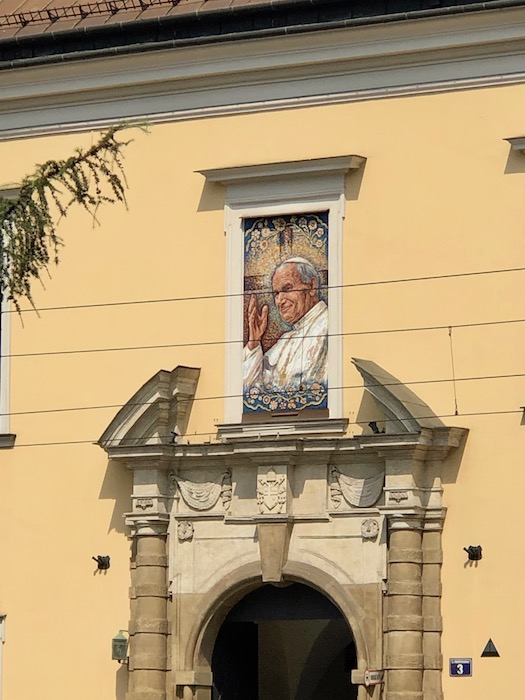
The interior of the basilica is beautiful – blue starry skies above, stunning stenciled walls and imposing artwork. A spectacular stained glass window depicts God (although it also looks a bit like King Neptune).
Further, into the old town, we stopped at more two churches standing side by side. The one on the left, St. Peter and Paul, is 500 years old, and the one on the right, St. Andrew’s, is 1,000 years old and still standing. We didn’t have time to go inside, so I added them to my mental list of places to return.
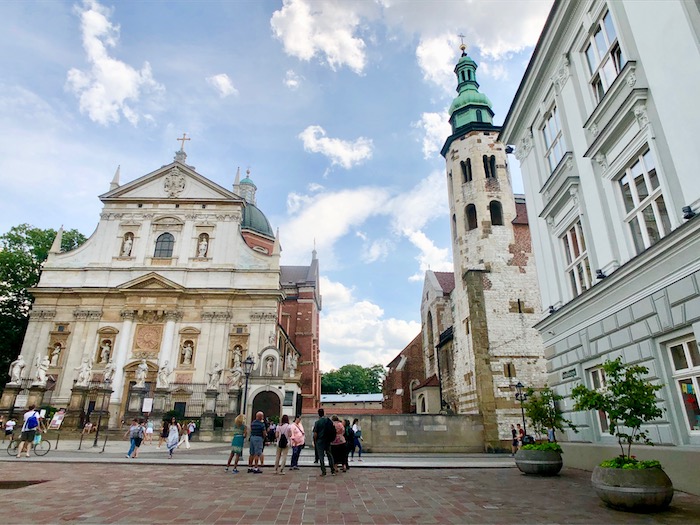
The final stages of our tour were on Wawel Hill at the cathedral and the castle. The cathedral’s official name is – the Royal Archcathedral Basilica of Saints Stanislaus and Wenceslaus. The cathedral, which is 900 years old, was where Karol Wojtyla offered his first Mass. The most notable chapel within the cathedral is Sigismund’s Chapel. The roof of the golden-domed chapel contains 50 kilos of gold. Security is pretty tight and no one is allowed in the area at night. I guess they are afraid of thieves. Would they still cut off their ears?
The tour was fast-paced but educational. I’m glad I was finally able to fit it in since I was sick when my first one was scheduled. We ended the tour just behind the castle. I was able to walk down the hill to catch an Uber for my afternoon tour at Schindler’s Factory. I arrived just as it started to spit rain again.

The first thing that you need to know about Schindler’s Factory is that it is extremely popular. This means that tickets sell out quickly – sometimes a day in advance. When I arrived, I noticed a large sign advising that there were no more tickets for the day. Luckily, I had booked a tour and our tour guide, Paul, had reserved the tickets in advance. The second thing to know about the Factory is that you won’t actually learn much about Schindler himself or his rescue of 1,098 Poles and Jews. While this is a shame, the exhibit regarding the Nazi Invasion in Poland that is in the museum is fabulous.
On September 1, 1939, the first bombs were dropped on Poland; by September 11, 1939, the Germans introduced the “new order.” At the end of September, the Russians had attacked the far side of Poland. Poland was crushed. By November 7, 1939, Governor-General Hans Frank, Hitler’s personal attorney, established his residence in Wawel Castle (Hitler gave it to him as a present for his loyalty). On April 12, 1940, Hans Frank issued an order that Jews were to be displaced from Krakow.
The next year, April of 1941, while the Jews celebrated Passover, bricklayers began to build a wall around the ghetto (“Jewish residential district”), where the Jews had been sent to live. The wall was shaped like tombstones; the ghetto meant to house hundreds, was home to 10-12,000 individuals. Food was severely limited and each resident was rationed 350 calories per day (the prisoners at Auschwitz were rationed 1300 calories per day). Hungry people don’t resist. On March 13-14, 1943, the ghetto was “liquidated.” The number of victims of the liquidation is unknown.
Poland lost 18% of its population during WWII. Krakow lost 20,000 to 30,000 Poles during the war. In 1939, there were 38,000 Jews in Krakow; at the end of the war, there were none.
In 1944, Schindler’s Factory was evacuated. Everything within the factory was shipped to a town just outside of Prague – with the equipment, Schindler hid people. They were shipped out and, ultimately saved.
On January 18, 1945, the message came from Berlin to evacuate Krakow.
One would think that things were brighter for the population in Krakow and Poland in general following liberation. It wasn’t. Communism took over; Poland’s resistance became the enemy and was destroyed. Hundreds of thousands in the following years were sent to Gulags in Siberia and perished.
Poland has seen so much death and destruction; however, the people I’ve met look forward to a bright future. The next elections occur in the fall of this year; it will be interesting to see whether the incumbent (who is not entirely popular) will win again.
After the interesting but mildly depressing tour, I returned to the old town with the purpose of printing my train tickets at the only Internet café I could locate. I’ll save all the finer details but suffice it to say, it was a bit of a three-ring circus since the woman running the shop couldn’t speak English I couldn’t speak Polish, my logon didn’t work, and only after five attempts at forwarding the tickets to the woman did she find them in her spam account. Afterward, I treated myself to ice cream.
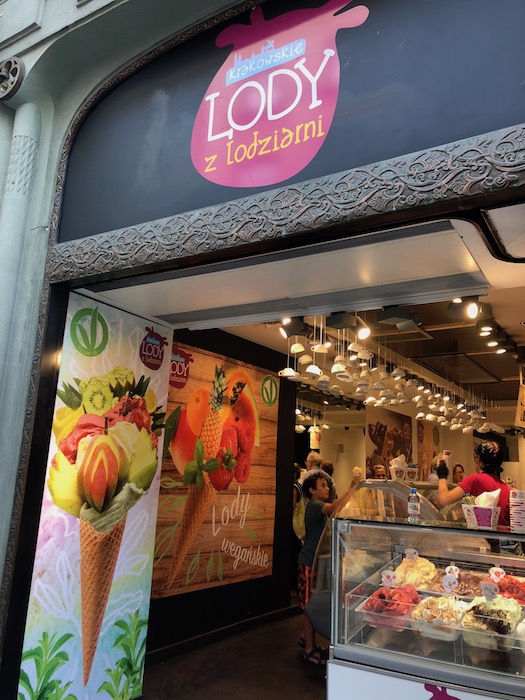
I also treated myself to visits to the interiors of some of the churches I’d previously seen from the outside – well, at least those that weren’t having mass.
It was a rather full day. I topped it off with pierogis because, well, I’m in Poland.
